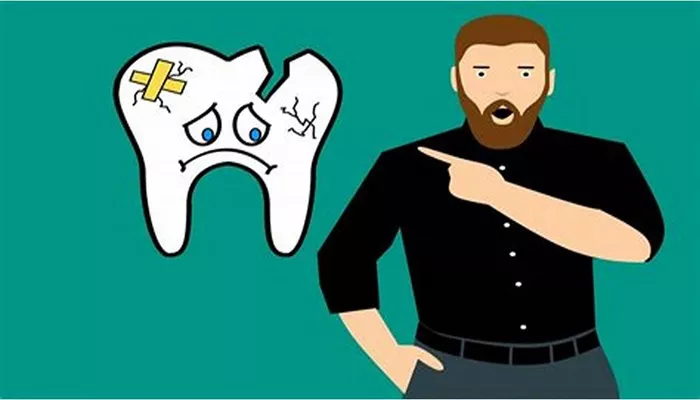Dental fillings are a common solution for treating cavities, but experiencing pain after getting a filling can be concerning.
Many patients report discomfort or sensitivity in the days or weeks following the procedure. This article explores the reasons behind this pain, providing a detailed understanding of what might be happening with your tooth.
What Is A Dental Filling?
A dental filling is a restorative procedure used to repair teeth that have been damaged by decay. When a dentist identifies a cavity, they will remove the decayed portion of the tooth and fill it with a material such as amalgam, composite resin, or gold. The goal of this procedure is to restore the tooth’s function and prevent further decay. While fillings are generally safe and effective, some patients may experience discomfort afterward.
Common Causes of Pain After a Filling
Experiencing pain after a dental filling can be attributed to several factors. Understanding these can help you determine whether your symptoms are normal or if they warrant further attention from your dentist.
1. Irritated Nerve Endings
One of the most common reasons for pain after a filling is irritation of the nerve endings within the tooth. When a dentist performs a filling, they often need to drill into the tooth to remove decay. This process can sometimes irritate the nerves located in the pulp of the tooth, leading to temporary sensitivity or pain.
Deep Fillings: If the cavity was deep and close to the nerve, this irritation can be more pronounced. In many cases, this sensitivity will diminish as the nerve heals over time, typically within a few days to weeks.
2. Incorrect Bite Alignment
Another frequent cause of discomfort is an incorrect bite alignment due to the height of the filling. After a filling, your bite should feel natural when you close your mouth and chew. However, if the filling is too high or not properly shaped, it can create additional pressure on the tooth when biting down.
Symptoms: You may notice pain when chewing or clenching your teeth. This discomfort often indicates that the filling needs adjustment. If left uncorrected, it can lead to persistent pain and even damage to other teeth.
3. Pulpitis
Pulpitis refers to inflammation of the pulp tissue inside the tooth. This condition can occur if decay was extensive or if there was trauma to the tooth during treatment.
Types of Pulpitis:
Reversible Pulpitis: In this case, inflammation is mild and may resolve with time and proper care.
Irreversible Pulpitis: This more severe form occurs when damage is extensive, potentially requiring root canal treatment or extraction.
4. Allergic Reactions
Though rare, some individuals may experience allergic reactions to materials used in dental fillings, particularly amalgam fillings that contain metals like mercury.
Symptoms: An allergic reaction might manifest as itching or rashes around the mouth or gums. If you suspect an allergy, consult your dentist for alternative materials.
5. Loose or Broken Fillings
If a filling becomes loose or breaks after placement, it can expose sensitive areas of your tooth to air and food particles, leading to pain.
Signs: You might notice increased sensitivity or pain when consuming hot or cold foods and drinks. If you suspect your filling has broken, contact your dentist for evaluation and repair.
6. Post-Operative Sensitivity
It’s common for teeth to be sensitive after any dental procedure, including fillings. This sensitivity can result from several factors:
Temperature Sensitivity: You may find that hot or cold foods trigger discomfort.
Pressure Sensitivity: Pain may occur when biting down on hard foods.
Managing Pain After A Filling
If you experience discomfort after getting a filling, there are several steps you can take to manage your symptoms:
Over-the-Counter Pain Relief: Non-prescription medications like ibuprofen or acetaminophen can help alleviate pain.
Avoid Trigger Foods: Stay away from very hot or cold foods and beverages until sensitivity decreases.
Use Desensitizing Toothpaste: These products can help reduce sensitivity over time by blocking nerve transmission in exposed dentin.
Maintain Good Oral Hygiene: Continue brushing and flossing gently around the filled area to keep it clean without aggravating sensitivity.
When to See Your Dentist
While mild discomfort is expected after a filling, certain symptoms should prompt you to contact your dentist:
Severe Pain: If pain becomes unbearable or does not improve over time.
Persistent Sensitivity: If sensitivity lasts longer than two weeks without improvement.
Other Symptoms: If you experience swelling, fever, or any signs of infection around the filled tooth.
Conclusion
Experiencing pain after getting a dental filling is not uncommon and can arise from various factors such as nerve irritation, bite misalignment, pulpitis, allergic reactions, loose fillings, and post-operative sensitivity. Most cases resolve on their own within days or weeks; however, persistent or severe symptoms should be evaluated by your dentist.
Understanding these causes not only helps in managing discomfort but also emphasizes the importance of follow-up care after dental procedures. Always communicate openly with your dental professional about any concerns you have regarding your fillings or overall oral health for optimal care and treatment outcomes.
Related topics:

